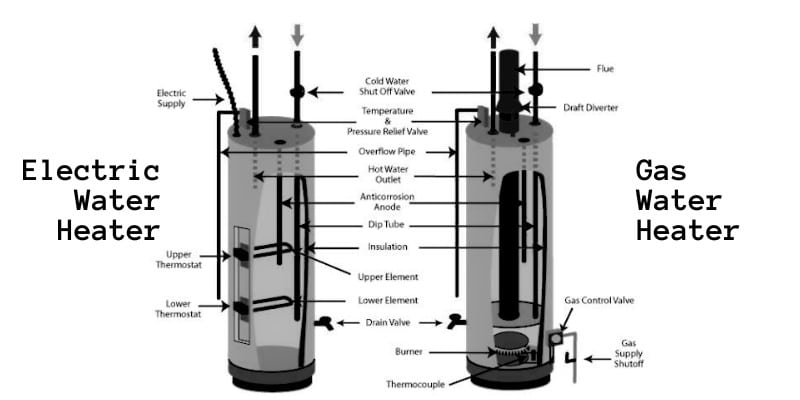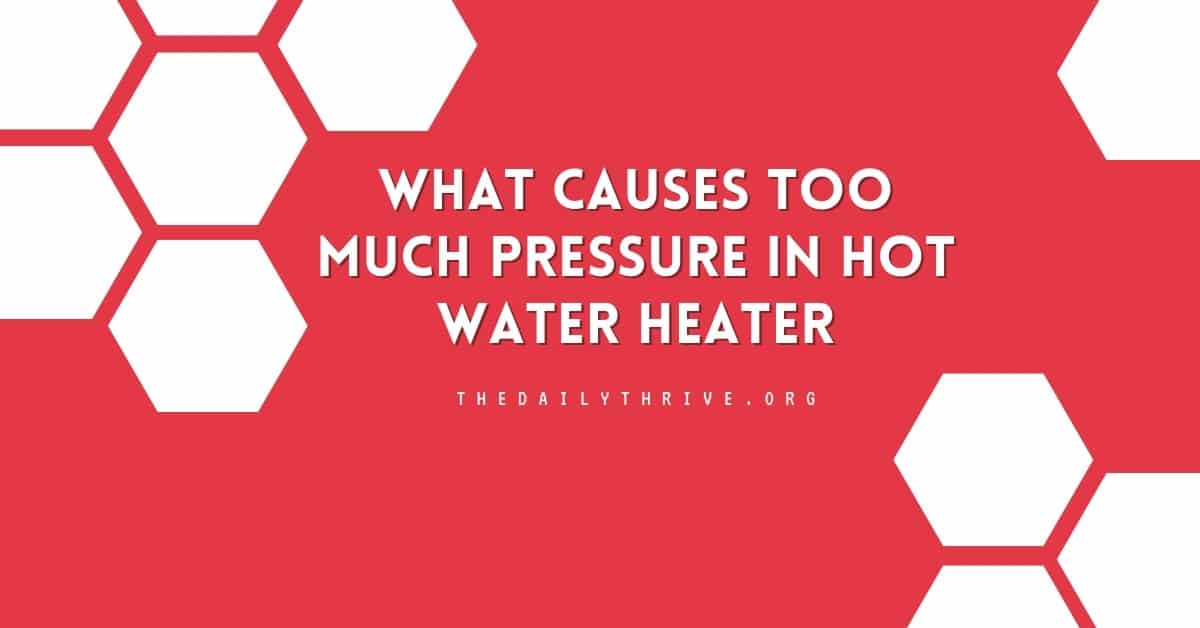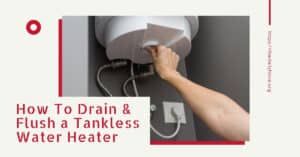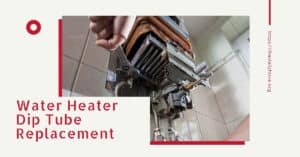During our daily routines, we often overlook the crucial role of hot water heaters. From taking a soothing shower to efficiently washing dishes, these appliances are indispensable. However, like any machine, they can malfunction. One such issue is when the water heater operates under excessive pressure, posing risks that range from minor inconveniences to major hazards.
How a Hot Water Heater Works
To address the pressure issue, let’s first understand how a water heater functions. At its core, a heater is equipped with a heating element that heats the water. This process is regulated by a thermostat, which ensures water remains at a preset temperature. The tank, usually made of steel, stores this water.

The principle of convection plays a pivotal role here. Water tends to rise to the top when heated due to its reduced density. Conversely, cooler water settles at the bottom. This continuous movement ensures a consistent water temperature throughout the tank.
Dangers of Excessive Pressure in a Hot Water Heater
When your heater faces high pressure, it’s not just an internal issue of the appliance; it’s a significant concern for homeowners. High pressure can lead to leaks, which may seem like minor nuisances but can escalate into structural damages if unchecked. Moreover, there’s a looming threat of the tank exploding, which could result in costly damages, apart from being a safety hazard.
Main Causes of Too Much Pressure Pressure in a Hot Water Heater
Understanding the root causes can pave the way to effective solutions:
Excessive Pressure Buildup
Steam naturally forms inside the tank when water is heated. However, if the tank’s heat exchanger gets blocked due to sediment or mineral deposits, this steam can’t escape, increasing pressure. Also, if a home lacks proper ventilation, it may indirectly cause pressure levels to spike in the heater.
Mineral Deposits
Tap water isn’t pure; it carries calcium and magnesium minerals. Over time, these can cling to the tank walls, decreasing their efficiency. These stubborn deposits can obstruct the normal flow and release of water, resulting in undue pressure buildup.
Incorrect Temperature Settings
Your heater’s thermostat is not just a dial; it’s the gatekeeper of its efficiency. Setting it too high can cause water to overheat, which, in turn, increases the internal pressure. It’s recommended to keep the thermostat below 120°F to prevent such issues.
Identifying the Symptoms of High Pressure in a Hot Water Heater
Faucet Red Flags
Faucets can serve as indicators. If they leak, especially when other fixtures like showers are in use, it hints at high pressure. Additionally, if turning on a tap results in an unexpected sputter or burst, that’s another sign.
Noisy Water Pipes
Have you ever heard a sudden, loud noise from your pipes? Known as a ‘water hammer,’ this occurs when a high-pressure water flow is abruptly stopped. It’s akin to a mini shockwave traveling through your pipes – a clear sign of high pressure.
Appliance Wear and Tear
Long-term exposure to high water pressures can hasten the degradation of household appliances. Washing machines, dishwashers, and heating systems may leak or lose efficiency. If these appliances wear out faster than anticipated, it’s worth checking your water pressure.
Immediate Steps to Take if You Suspect High Pressure
If you believe your heater’s pressure is too high:
- Turn off its power source immediately.
- Examine the temperature and pressure relief valve (T&P valve). Leaks or an open valve indicate excessive internal pressure.
- Close the cold water supply to the heater and switch off any devices connected to its hot water lines.
- Adjust the thermostat to a lower setting and observe. If problems persist, consult a professional.
Proactive Measures to Prevent Pressure Buildup
Regular Maintenance
Scheduled check-ups and flushing out your tank can eliminate sediment and mineral buildup. These simple steps can prolong the efficiency and life of your heater.
Over time, the rubber diaphragm inside might degrade, or the tank itself could lose pressure. Yearly inspections can prevent potential issues and ensure the expansion tank functions optimally.
Installing Safety Features
Safety valves, such as the T&P valve, are crucial. It releases excess pressure if the temperature surpasses 210°F or pressure exceeds 150 psi. If there’s water pooling near it, you likely have a high-pressure issue.
Setting Optimal Temperature Levels
Regularly monitoring and adjusting your heater’s thermostat can prevent many issues. Keeping it below 120°F ensures the appliance operates efficiently without creating undue internal pressures.
Expansion Tanks: The Solution to Pressure Issues in Closed Systems
An expansion tank is an additional smaller tank connected to the water line between the main water supply and the water heater. When thermal expansion occurs, the extra volume of water moves into the expansion tank, preventing a surge in pressure in the primary heater.
Advantages of expansion tanks:
- Protection from Pressure Fluctuations: The primary benefit is that they absorb the excess volume of water, preventing sudden pressure spikes that can harm the heater and connected appliances.
- Prolonged Equipment Life: Keeping the pressure consistent extends the heater and plumbing fixtures’ lifespan. It reduces wear and tear, especially on appliance seals and valves.
- Water Waste Reduction: In systems without expansion tanks, the T&P valve may release water to handle the excess pressure. With an expansion tank, such water waste can be minimized.
In the age of the smart home, integrating technology with your water heater can be a boon. Smart water heater monitors can provide real-time feedback on the appliance’s pressure and temperature, alerting homeowners to any potential problems before they escalate. While the initial investment might be higher, the peace of mind and potential savings from early problem detection can be invaluable.
While water heaters are integral components of modern homes, they require meticulous care and understanding. Managing pressure within these systems is about the appliance’s longevity and safeguarding the house and its inhabitants. With tools like expansion tanks and the incorporation of smart technology, homeowners can be well-equipped to tackle pressure-related challenges head-on. Regular maintenance and proactive measures ensure a seamless and safe experience for all.






